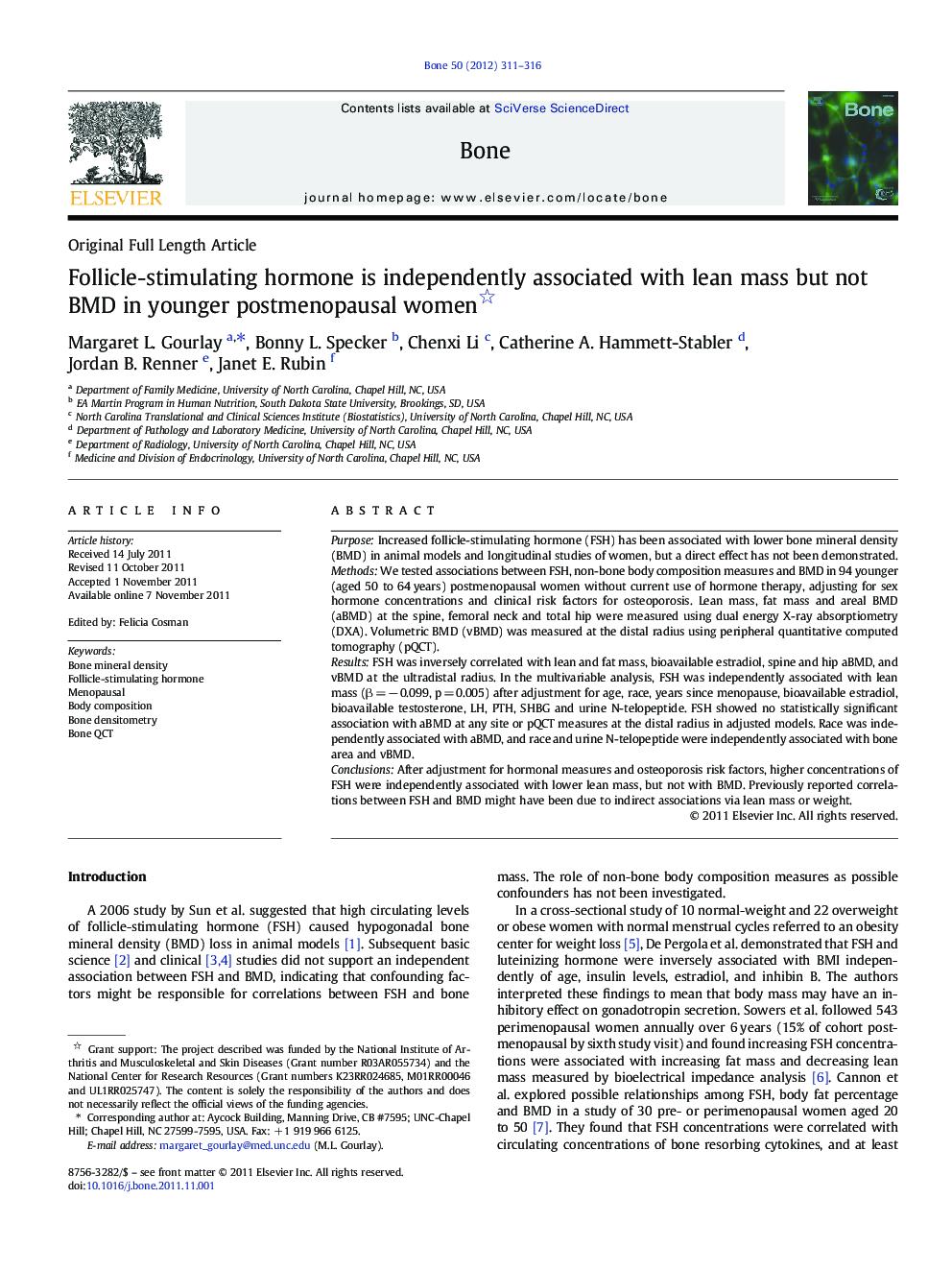| کد مقاله | کد نشریه | سال انتشار | مقاله انگلیسی | نسخه تمام متن |
|---|---|---|---|---|
| 5891944 | 1153283 | 2012 | 6 صفحه PDF | دانلود رایگان |

PurposeIncreased follicle-stimulating hormone (FSH) has been associated with lower bone mineral density (BMD) in animal models and longitudinal studies of women, but a direct effect has not been demonstrated.MethodsWe tested associations between FSH, non-bone body composition measures and BMD in 94 younger (aged 50 to 64 years) postmenopausal women without current use of hormone therapy, adjusting for sex hormone concentrations and clinical risk factors for osteoporosis. Lean mass, fat mass and areal BMD (aBMD) at the spine, femoral neck and total hip were measured using dual energy X-ray absorptiometry (DXA). Volumetric BMD (vBMD) was measured at the distal radius using peripheral quantitative computed tomography (pQCT).ResultsFSH was inversely correlated with lean and fat mass, bioavailable estradiol, spine and hip aBMD, and vBMD at the ultradistal radius. In the multivariable analysis, FSH was independently associated with lean mass (β = â 0.099, p = 0.005) after adjustment for age, race, years since menopause, bioavailable estradiol, bioavailable testosterone, LH, PTH, SHBG and urine N-telopeptide. FSH showed no statistically significant association with aBMD at any site or pQCT measures at the distal radius in adjusted models. Race was independently associated with aBMD, and race and urine N-telopeptide were independently associated with bone area and vBMD.ConclusionsAfter adjustment for hormonal measures and osteoporosis risk factors, higher concentrations of FSH were independently associated with lower lean mass, but not with BMD. Previously reported correlations between FSH and BMD might have been due to indirect associations via lean mass or weight.
⺠Higher FSH levels were independently associated with lower lean mass but not BMD. ⺠Correlations between FSH and BMD might be confounded by lean mass or weight. ⺠Hormonal effects may be less important than weight-bearing effects on BMD.
Journal: Bone - Volume 50, Issue 1, January 2012, Pages 311-316